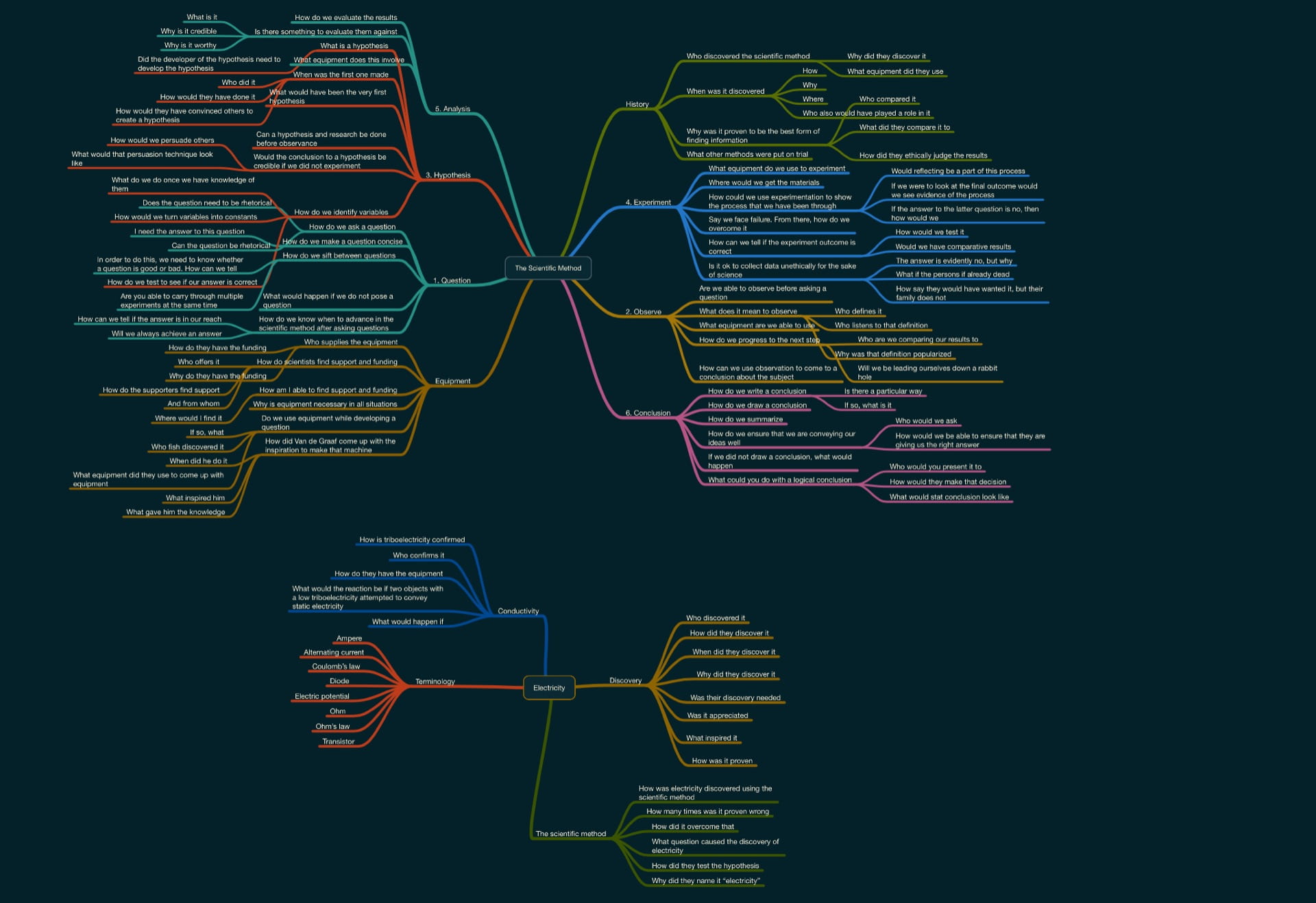
Salutations
I think we can all agree that sniffing an unknown substance is a big no-no. In most walks of society, it is just about the most Darwinian action that you can exemplify. Unfortunately, you will never be able to completely outrun smelling foreign substances. At some point in your life, you may have so risk it all and learn how to waft. In my case, Scimatics 9 is that point in my life. Why were doing such a thing? A very astute question. We were conducting this research for our most recent Scimatics project, Metaphor Machines. Think of it this way. What are three somewhat unrelated subjects that would make the perfect equation, the outcome being a learning opportunity? If you guessed Rube Goldberg machines, the Scientific Method and electrical circuits, then you would be correct! Because who does not love over complicating a simple task.
Process
Step 1 of the Scientific Method: Observing.
Step 1 of this project: Observing and analyzing materials.
In hindsight, the steps that I took throughout this project very closely resemble the steps in the Scientific method. The very first stage that any analytical study goes through is this observation stage. The very first opportunity that I received to observe an aspect of this project was in Milestone 1, our project start mind map. The competency that we exercised in this Milestone was Questioning and Predicting. In our last Scimatics project I mentioned that I would have liked to make a slightly more elaborate mind map, and I believe that I did that in this project by dedicating more time towards brainstorming. What I did not realize last time I set this goal for myself was that all of the thoughts and questions that I needed in order to execute this well were already there, but rather what I needed to do was give myself a better platform to register all of these thoughts. Once I did this, noticed an instant difference in the quality of my mind map.

Step 2 & 3 of the Scientific Method: Questioning and Analyzing.
Step 2 & 3 of this project: Researching and developing questions about the final product and the necessary steps that we will need to take to get there.

Step 2 & 3 of the Scientific Method were represented in Milestone 4, our blueprints. I will be the first to admit that these may have not been the strongest aspects of our project, and this is because at the time we had too little initiative to communicate as a group, and the blueprints were lost in the sea of all of our drafts. I am glad that we managed to get something handed in, although since then I have noticed several flaws and corrected these issues. The moral of the story is that I need to stop relying on other people to give me details to execute. I will be happier and more proud of the product if everyone is contributing equally.

Step 4 & 5 of the Scientific Method: Developing and testing a hypothesis
Step 4 & 5 of our project: Developing and testing our machines
This takes the cake for my favourite part of this project. Finally seeing all of the individual parts turn into one machine was very intriguing to watch. The competency that we were using in this segment of the project was Planning and Conducting. This requires the use of proper data and equipment to successfully complete the project. I could have involved myself more in this stage, but I strayed far from the machine out of fear that I would ruin it. Nonetheless, I built the electrical circuit for this phase pleasantly surprised that it was functional. I now feel confident in my ability to build a very small parallel circuit.
https://youtu.be/EGiTRNqSXcI
Competencies
Questioning and Predicting
Demonstrate a sustained intellectual curiosity about a scientific topic or problem of personal interest
By thinking flexibly and taking responsible risks, I was able to take my current knowledge and apply it so that I could easily sustain intellectual curiosity. Outside of school, I gained confidence with this subject by creating small entries about what I had learned throughout the week, so that by the time the weekend was I over I was above and beyond where I needed to be.
Planning and Conducting
Reasoning and Analyzing
Final product
https://youtu.be/JnaeICd7p3c
The final video touches on the functions of our machine, the electrical circuit as well as the metaphor for it’s use and appearance. The video is rather minimalistic, nonetheless it conveyed the point well. If you were to look at our final blueprints compared to our final product, you would certainly notice several differences. This is because along the way we encountered several issues that we overcame by adapting the outcome. In retrospect, they were rather trivial, although it was from these mistakes that I gained insight. In the future, I will be using new productivity tricks and tips that I learned from creating our mind maps, as well as my newfound knowledge of the Scientific Method. In the future, I would like to continue to learn about electricity and electrical circuits, as I found them very fascinating to learn about. My goal for our next project is to learn how to motivate myself to implement criticism that I am giving myself in these blog posts. This project has brought me a new understanding of my true potential, and to have the ability to motivate myself would give me the capability to use it.
If you would like to visit my brief post on electrical conductivity and friction, I would advise you to click this totally unassuming pop-up!
https://www.blog44.ca/allyt/2020/04/02/1543/
My group members in this project were Meg, Anders and Holly. If you would like to check out their blog posts click here.

